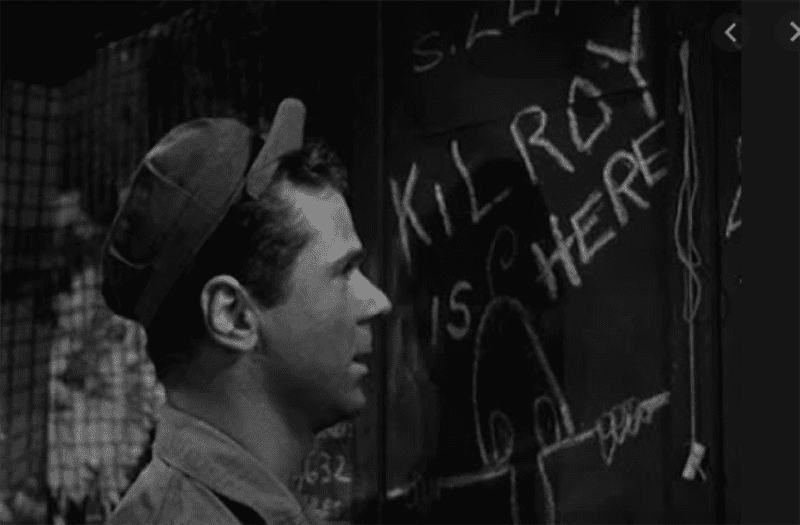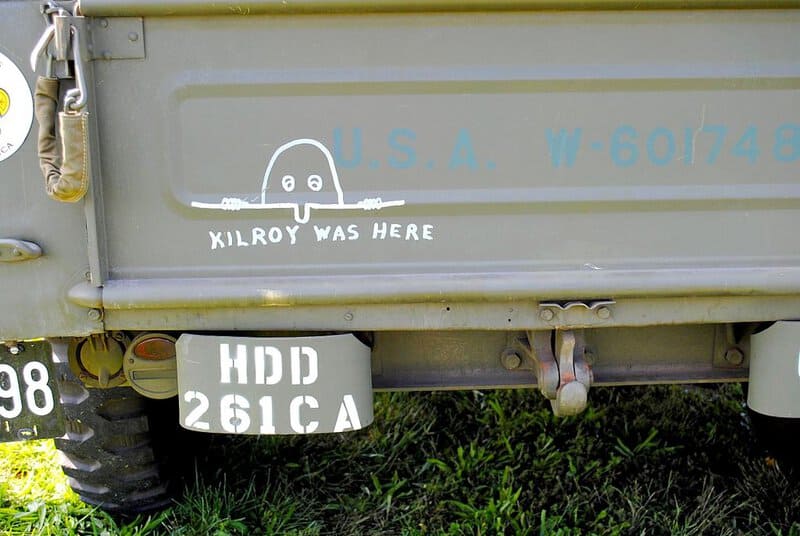
ADVERTISEMENT - CONTINUE READING BELOW
World War II’s Most Viral Tradition
Occasionally, nowadays, graffiti of a long-nosed bald guy peeping over a wall can be spotted, usually accompanied by the caption “Kilroy Was Here“. It is homage to an American viral meme that spread around the world in the Second World War, and popped up wherever American servicemen could be found. GIs competed to try and tag the most obscure, out of the way, and unlikely locations with the picture and text that Kilroy had been there. Kilroy had apparently been everywhere. The meme was spotted in barracks, bathrooms, cafeterias, Navy ship holds, the ruins of wrecked buildings, tents, carved on tree trunks, and on anything that could get chalked or painted.

ADVERTISEMENT - CONTINUE READING BELOW
“Kilroy Was Here” went so viral that it sometimes appeared even before American GIs arrived. US soldiers who stormed enemy beaches claimed to have seen notices that Kilroy had been there ahead of them. The meme mystified Japanese intelligence. Rumor had it that even the Fuhrer wanted to know the significance of Kilroy, and whether it had some secret espionage connotations. After Germany was defeated, Stalin saw “Kilroy was here” tagged in the VIP bathroom at the Potsdam Conference, and asked who he was. A good question: who was Kilroy, and what kicked off World War II’s most viral meme tradition?

